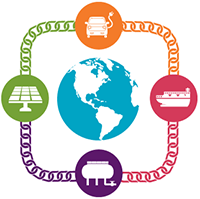The Energizer – Volume 94
By: Buck B. Endemann, Daniel S. Cohen, Molly K. Barker, Natalie J. Reid, Matthew P. Clark, Nathan C. Howe, Maeve C. Tibbetts, Oretha A. Manu
There is a lot of buzz around clean technology, distributed energy resources (DERs), microgrids, and other technological innovations in renewable energy and clean transport industries, and how these developments can contribute to solving longstanding environmental justice issues. As these innovations develop, energy markets will undergo substantial changes to which consumers and industry participants alike will need to adapt and leverage. Every other week, K&L Gates’ The Energizer will highlight emerging issues or stories relating to the use of DERs, energy storage, emerging technologies, hydrogen, and other innovations driving the energy industry forward.
IN THIS ISSUE:
- Apex Clean Energy and Plug Power Enter PPA to Power Largest Wind-Supplied Green Hydrogen Plant in the Nation
- Cybersecurity Legislation Advances to Senate
- First in Nation’s Local Natural Gas Ban is Upheld in Federal Court
- Midwestern Coal Plants Continue to Close Under Market Pressures


